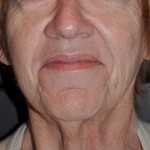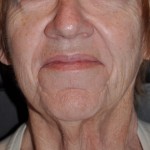Injectable fillers have helped revolutionize facial rejuvenation, allowing a simple office procedure to create an immediate effect with no recovery. With instantaneous results, small areas of facial volume loss of deficiency can be filled or plumped up. While fillers can be put just about anywhere on the face, the vast majority are placed in just two areas. The aging nasolabial folds or lip-cheek grooves (also known as the ‘parentheses’) and the thin or deficient lips is where the vast majority of the fillers find their use.
The majority of injectable filler patients are usually in the age range of 30 to 55 years ago. This is a time where the effects of age are beginning to be seen and one is willing to invest in some efforts to stem the tide. When the signs of aging are still early or only moderate in depth, injectable fillers can make a real visible difference. Lip-cheek grooves can become noticeably softened and less in depth. Patients so treated can make an immediate look in the mirror and comment how much better these areas look…an instant beauty miracle so to speak.

Occasionally I will get such an older patient who comes for Botox or injectable fillers for the very first time. They usually have never done anything cosmetic before and this is their initial aesthetic foray. Always they are better served by other procedures, like a facelift, but they are not interested in anything surgical.

Older patients who do not want facial surgery but only injectable treatments do get less impressive results. But they appear to be willing to accept amore modest benefit as opposed to no improvement at all. At the least, they may be just curious as to what all the fuss is about with these injectable fillers and just want to try it for themselves.
Dr. Barry Eppley
Indianapolis, Indiana



